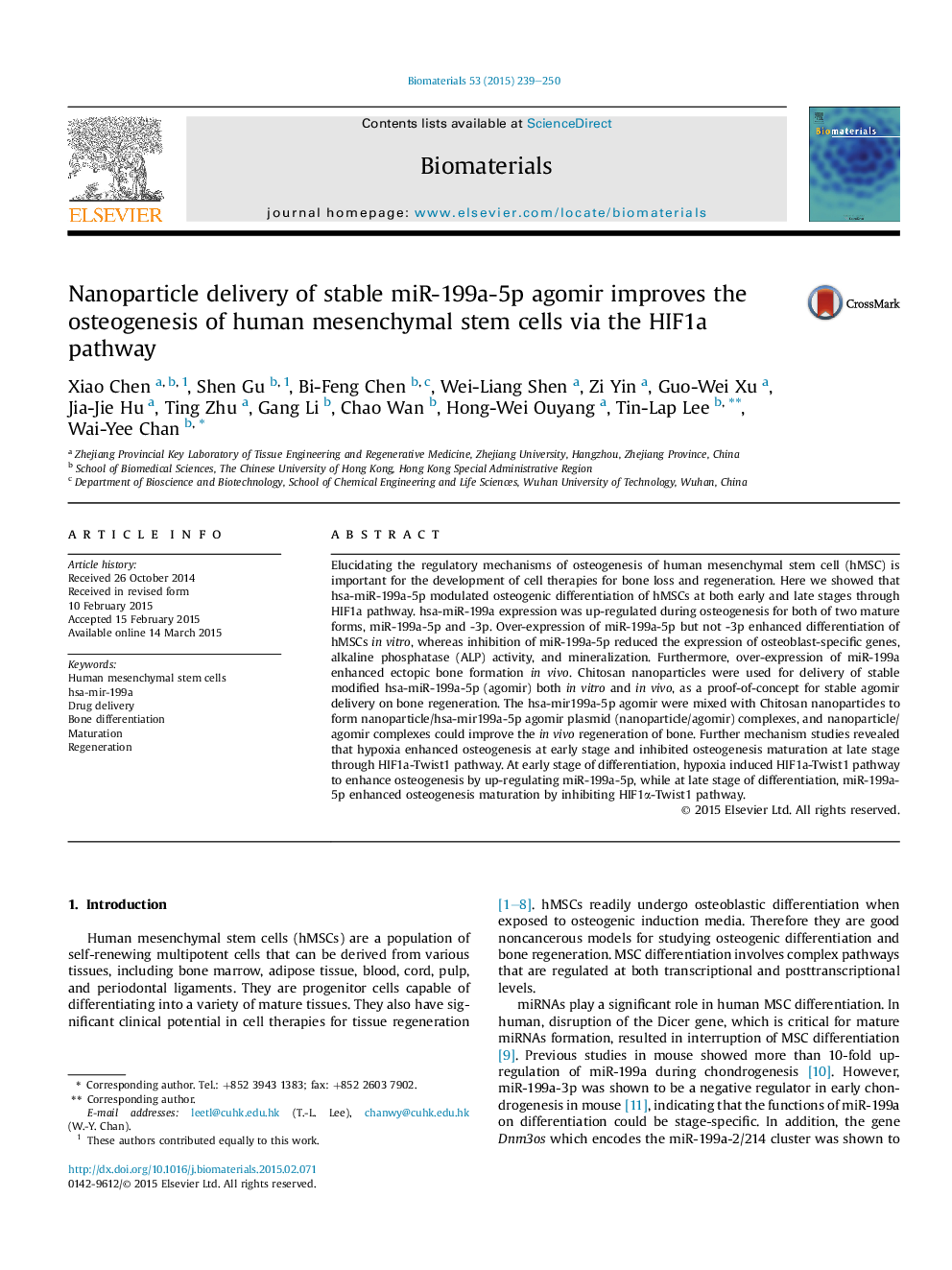| Article ID | Journal | Published Year | Pages | File Type |
|---|---|---|---|---|
| 6485826 | Biomaterials | 2015 | 12 Pages |
Abstract
Elucidating the regulatory mechanisms of osteogenesis of human mesenchymal stem cell (hMSC) is important for the development of cell therapies for bone loss and regeneration. Here we showed that hsa-miR-199a-5p modulated osteogenic differentiation of hMSCs at both early and late stages through HIF1a pathway. hsa-miR-199a expression was up-regulated during osteogenesis for both of two mature forms, miR-199a-5p and -3p. Over-expression of miR-199a-5p but not -3p enhanced differentiation of hMSCs in vitro, whereas inhibition of miR-199a-5p reduced the expression of osteoblast-specific genes, alkaline phosphatase (ALP) activity, and mineralization. Furthermore, over-expression of miR-199a enhanced ectopic bone formation in vivo. Chitosan nanoparticles were used for delivery of stable modified hsa-miR-199a-5p (agomir) both in vitro and in vivo, as a proof-of-concept for stable agomir delivery on bone regeneration. The hsa-mir199a-5p agomir were mixed with Chitosan nanoparticles to form nanoparticle/hsa-mir199a-5p agomir plasmid (nanoparticle/agomir) complexes, and nanoparticle/agomir complexes could improve the in vivo regeneration of bone. Further mechanism studies revealed that hypoxia enhanced osteogenesis at early stage and inhibited osteogenesis maturation at late stage through HIF1a-Twist1 pathway. At early stage of differentiation, hypoxia induced HIF1a-Twist1 pathway to enhance osteogenesis by up-regulating miR-199a-5p, while at late stage of differentiation, miR-199a-5p enhanced osteogenesis maturation by inhibiting HIF1α-Twist1 pathway.
Related Topics
Physical Sciences and Engineering
Chemical Engineering
Bioengineering
Authors
Xiao Chen, Shen Gu, Bi-Feng Chen, Wei-Liang Shen, Zi Yin, Guo-Wei Xu, Jia-Jie Hu, Ting Zhu, Gang Li, Chao Wan, Hong-Wei Ouyang, Tin-Lap Lee, Wai-Yee Chan,
